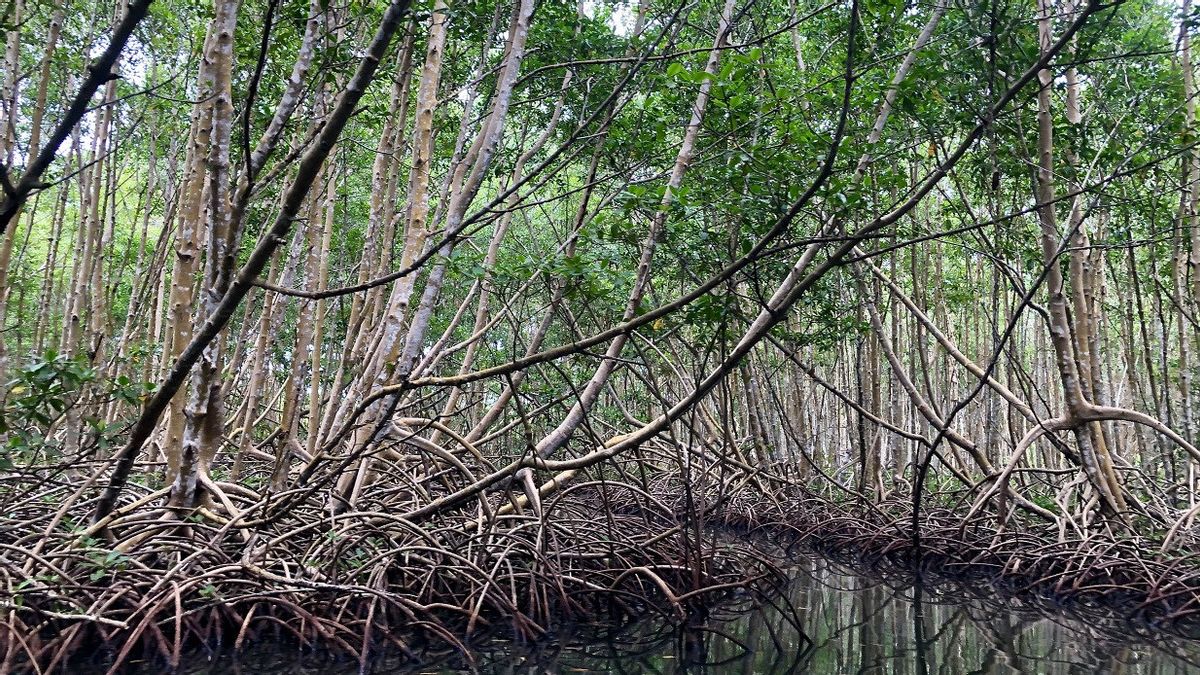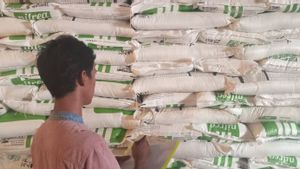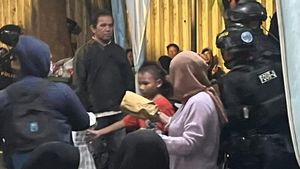JAKARTA - The largest known bacteria, vermicelli-shaped organisms found in shallow mangrove swamps in the Caribbean and large enough to be seen with the naked eye, are redefining what is possible for bacteria, the most ancient form of life on Earth.
Scientists say the bacterium, called Thiomargarita magnifica, is important not only for its colossal size, for a single-celled organism up to about eight-tenths of an inch (2 cm) long, but also for its internal architecture unlike any other bacterium.
DNA, the blueprint of an organism, does not float freely within cells as in most bacteria, but is contained in many tiny membrane-bound sacs. The membrane-bound structures in the cell are called organelles.
"It's thousands of times larger than a regular-sized bacterium. Finding this bacterium is like meeting a human as tall as Mount Everest," said marine biologist Jean-Marie Volland of the US Department of Energy's Joint Genome Institute and Research Laboratory in Complex Systems in California, one of the study's leaders. published in the journal 'Science', reported Reuters 24 June.
This bacterium has been found in several locations in Guadeloupe, a French archipelago in the Caribbean. This was first seen in the sulfur-rich seawater of the Guadeloupe swamp by Université des Antilles microbiologists and study co-leader Olivier Gros.
"In 2009, I found long white filaments attached to the sunken leaves of a mangrove tree. I found such filaments interesting. I took them back to the lab to analyze them," said Gros.
"It was a big surprise for me to have such a huge bacterium living in the Guadeloupe mangroves," he said.
Normal bacterial species measure 1-5 micrometers in length. This species has an average length of 10,000 micrometers (four tenths of an inch/1 cm), with some Thiomargarita magnifica twice as long.
"This is an order of magnitude larger than what we thought was the maximum possible size for a single bacterium. They have nearly the same size and shape of eyelashes," Volland said.

It is known, the largest bacteria known until now has a maximum length of about 750 micrometers.
Bacteria are single-celled organisms that are present almost everywhere on the planet, essential to their ecosystems and to most living things. Bacteria are considered to be the first organisms to inhabit Earth and remain quite simple in structure billions of years later. The human body is full of bacteria, only a small number of which cause disease.
Thiomargarita magnifica is not the largest known single-celled organism. The 'title' was given to the aquatic algae Caulerpa taxifolia, which reaches 6-12 inches (15-30 cm) in length.
Meanwhile, Caribbean mangrove swamps are packed with organic matter, with microbes in the sediments degrading this material and producing high sulfur concentrations. The sulfur-rich environment offers an energy source for bacteria such as Thiomargarita magnifica.
The researchers named the organelle containing the DNA "pepins" after the French word for the tiny seeds inside the fruit.
"Apart from the two exceptions, no other bacteria are known to store their DNA in membrane-bound organelles. That is actually a characteristic of more complex cells that have a membrane-bound nucleus, such as human cells, or animal and plant cells," he said. Volland.
Mapping of its genome showed that Thiomagarita magnifica was missing several important genes, for cell division and had more than the number of copies of the genes responsible for cell elongation.
"This may explain, in part, why cells grow into such elongated filaments. The genome is also very large and contains three times the average number of genes normally found in bacteria. Half of those genes, we don't know what they are for." said Volland.
These bacteria illustrate how life on Earth still has surprises waiting to be discovered, he said.
"Life is interesting, very diverse and very complex. It is very important to stay curious and open-minded," concluded Volland.
The English, Chinese, Japanese, Arabic, and French versions are automatically generated by the AI. So there may still be inaccuracies in translating, please always see Indonesian as our main language. (system supported by DigitalSiber.id)













